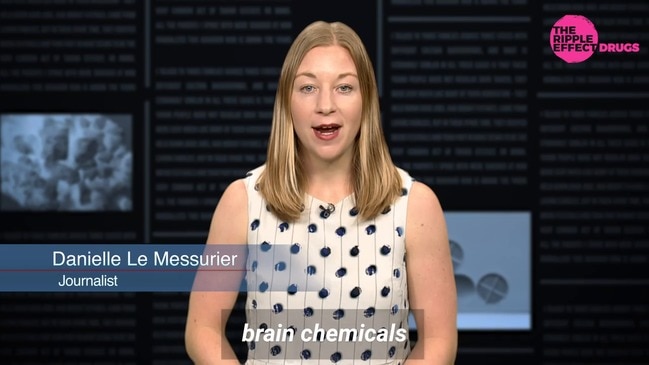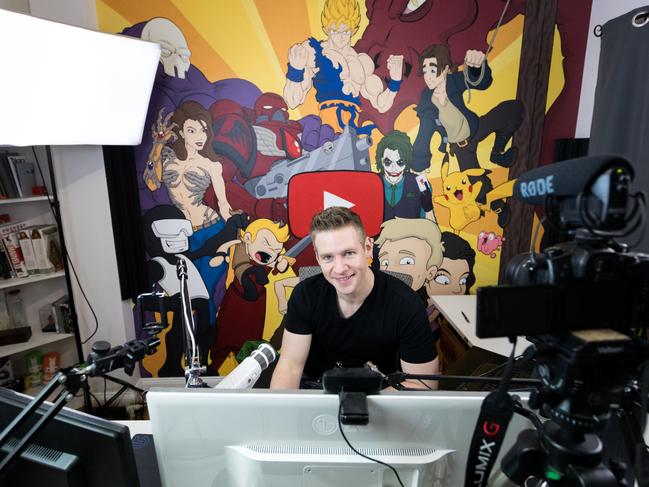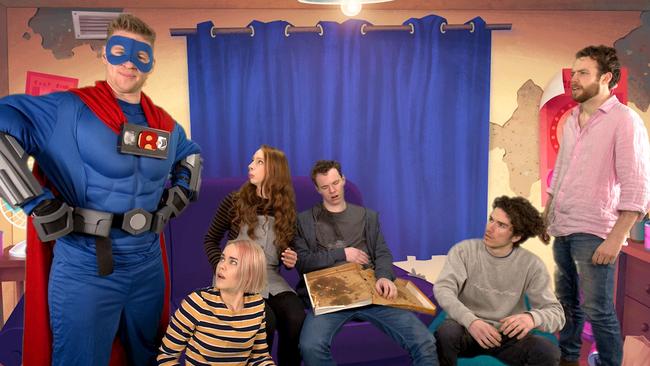YouTube star Jazza on his confronting MDMA video series
It’s explicit, blunt and often over the top. So why would a YouTube star with almost five million art-loving followers want to tackle the confronting world of party drugs, music festivals and overdoses? Here he explains the inspiration behind his educational two-part video series.

The Ripple Effect
Don't miss out on the headlines from The Ripple Effect. Followed categories will be added to My News.
Talking to people about party drugs — not at them — is why Australian YouTube star Josiah “Jazza” Brooks joined The Ripple Effect to write and produce an no holds barred education video series for teenagers and young adults.
Jazza is a 30-year-old full-time YouTube star, TV presenter and author. His YouTube channel Jazza (formerly Draw with Jazza) is the largest art-themed YouTube channel in the world with more than 4.67 million subscribers. He’s kind of a big deal. Here, Jazza explains why he is passionate about education young people about the perils of drugs.
GRAPHIC WARNING: WATCH PART ONE OF THE RIPPLE EFFECT HERE

Question: You’ve created a no-filter look at a night on MDMA, using blunt and explicit language. Why was that approach important?
Answer: I think it is important to not talk down to your audience and in drug education it is important that they don’t see the drug as stigmatised. It’s also important to not feel like you have to be really polite and sanitised about this issue.
I wasn’t attempting to be crass as for the sake of upsetting the more conservative viewer but the more conservative viewer isn’t going to be the target — the person thinking about taking drugs at a music festival.
I tend to have a pretty immature sense of humour and can go over the top in the way I hold back in my YouTube videos, I found that I could feel like I was mucking around with my friends and could have no filter and use that a guide to the writing process.
I think if the viewer feels like you’re on the level with them or at least willing to not take everything too seriously, there is an opportunity for them to open up to the presentation and not feel alienated, to enjoy the entertainment part of it too.
GO BEHIND THE SCENES OF THE RIPPLE EFFECT PART ONE: HOW JAZZA CREATED THAT AMAZING ANIMATION

Q: Why did you take a game show approach to using MDMA?
A: The game show was one part of a mechanism, an approach, that I was using throughout all of the content and that was to pull the context away from reality.
The game show is something sensational and loud and a little unnatural and by framing the offer to take drugs through the lens of a game show it serves a dual purpose of showing the effect of peer pressure on the characters’ choices while not appearing to preach. After all, every game show contestant wants to win and when people are offering you drugs they don’t think in that moment that they are offering you the risks associated with them … everyone is just interested in a fun night out.

Q: As someone with a huge YouTube following, this video is a step in a new direction for you. How do you think your audience will respond?
A: I focus on making content that propels me first, even some of my YouTube mediums will isolate some members of my audience, so with content like The Ripple Effect I’m aware that there is a good portion of my YouTube audience that will find it unrelatable and inappropriate. The opportunity to make something that might saves lives and help people make more informed decisions, while giving me the opportunity to stretch myself and feels like a great outcome regardless as to whether the project is suited to everyone.
----//----
GRAPHIC WARNING: WATCH PART ONE OF THE RIPPLE EFFECT HERE
----//----

Q: It’s been impossible to avoid the debate around festival drug-taking and deaths. What are your views on this issue?

I think the challenge that The Ripple Effect is trying to take on, is to make the risks as clear as possible without spending too much time and energy stigmatising the practice. And having the effect of alienating. Anyone who has ever used recreational drugs is entirely aware on the surface that, if you forgive my quoting South Park “drugs are bad, mmmkaay” but if you are entertaining to your core audience first, then chances are when risks are addressed without preaching its bound to be better internalised.
Q: What do you hope people take from the video?
A: The number one priority from the very beginning was to reduce the overdose rate. The difference the content makes might be marginal in achieving this but in our minds if even a few better decisions are made or fingers crossed some lives are saved because people feel encouraged to make more informed choices then we have achieved what we have set out to.
